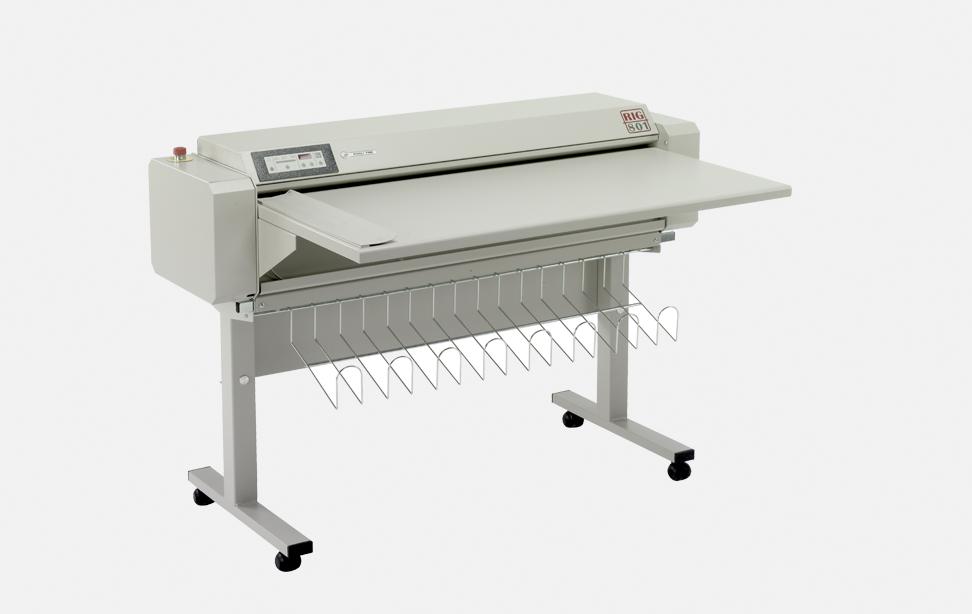
Drawing Plan Folders
Okay, we know that traditionally, building drawings and floor plans are either stored rolled up in a tube, or laid out flat in a plan cabinet. If they need to be taken somewhere to show someone, then invariably it involved carting a not unsubstantial tube around with you.
For the skilled, folding by hand has always been an option but it is time consuming and unproductive.
Invest in a folding machine and save time and money
Todays folding machines work in conjunction with most wide-format printers, or as stand-alone document folders. Rigoli, and Gera are already established names in the construction, architectural and engineering offices with large plan printing setups producing thousands of plans. For these companies folding machines are vital for speed and freeing up staff time.
The return on investment for plan folding machines is remarkably quick. If you buy a folder such as the Rigoli 750 which retails for around £4,000 and pay your operator say £12 ph to fold plans, then in less than 10 weeks the folder has paid for itself. However as we all know it is more than likely that a senior architect or engineer is folding the plans with the latest revisions in a desperate hurry to meet the last post – then pay back can be even quicker!
What are the different types of folding machines?
Drawing folders are described as either off-line or in-line. In-line use means that you can connect the printer directly to the folder to produce a seamless print to finished folded product. This speeds up the whole printing process and is ideal for an environment such as a print reproduction shop or larger commercial print business. It is also remarkably easy to operate. Examples would be Gera Butterefly Extra III that is designed to work with HP’s DJ T7100 or the Gera Ladybird II which works with HP’s T3500.
The whole process can be operated by one single person, who can choose the size of print and also the type of folding required, be it fan-folded or cross-folded, always with crisp edges. The manufacturers that we have mentioned produce drawing folding machines which are compatible with certain HP, Ricoh, Canon and Kip wide-format printing machines.
For off-line use, the advantages mentioned above, such as easy, labour-saving, single-person operation and suitability of a whole range of wide-format printers still apply. However, working off-line does allow for additional flexibility and adaptability.
With their compact footprint, these drawing folding machines can either be operated again attached to the wide-format printer, or it can operate in a stand-alone environment – ideal if space is at a premium, while desktop units are also available. Though the machine is hand-fed, the operator can select a variety of fold widths for maps, drawings and leaflets – don’t forget, these folding machines aren’t just for over-sized prints!
The other advantage of a stand-alone drawing folding machine is that if your office or business has more than one printer, you can share the machine across any number of printers.
Finally, as is becoming a major plus point with wide-format printers, there is no limit to the length of fold, which makes these folders an ideal combination for railway-related drawings and seismic well logs.
As far as the folders are concerned, Rigoli, Italy, now produce a range of both in-line and offline since the company recently re-formed. Gera, Italy, are a long-established company producing in-line and offline machines which have close links with HP and Xerox.
To learn more about drawing folding machines, their capabilities and potential, why not give us a call here at Entwistle Group, or come in and see us at our premises in Middleton for a demonstration. We can also explain the advantages of buying your plan folding machine from us. These include installing and setting up your folder by our own factory trained engineers, service contracts and lease plans and most importantly staff training.